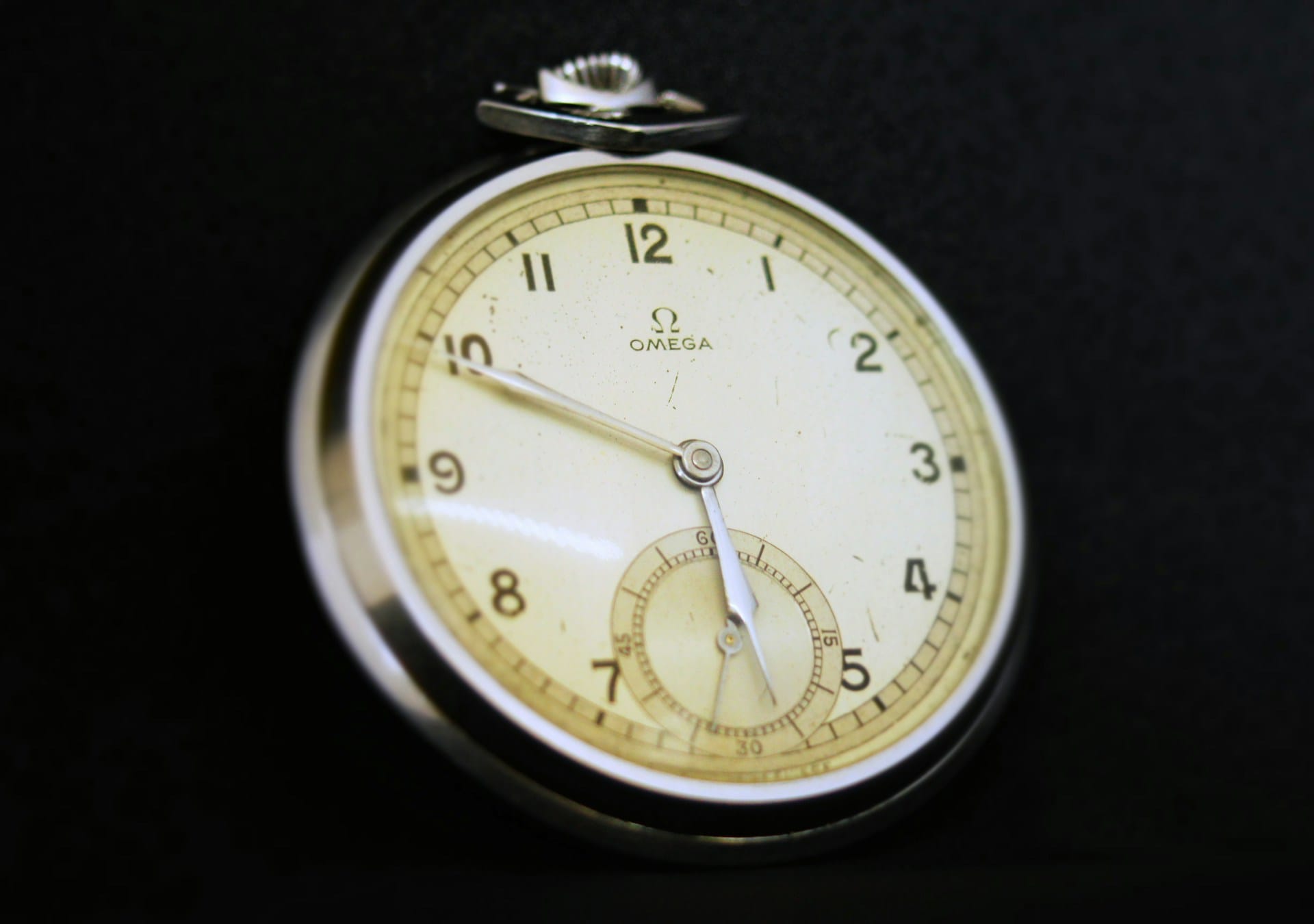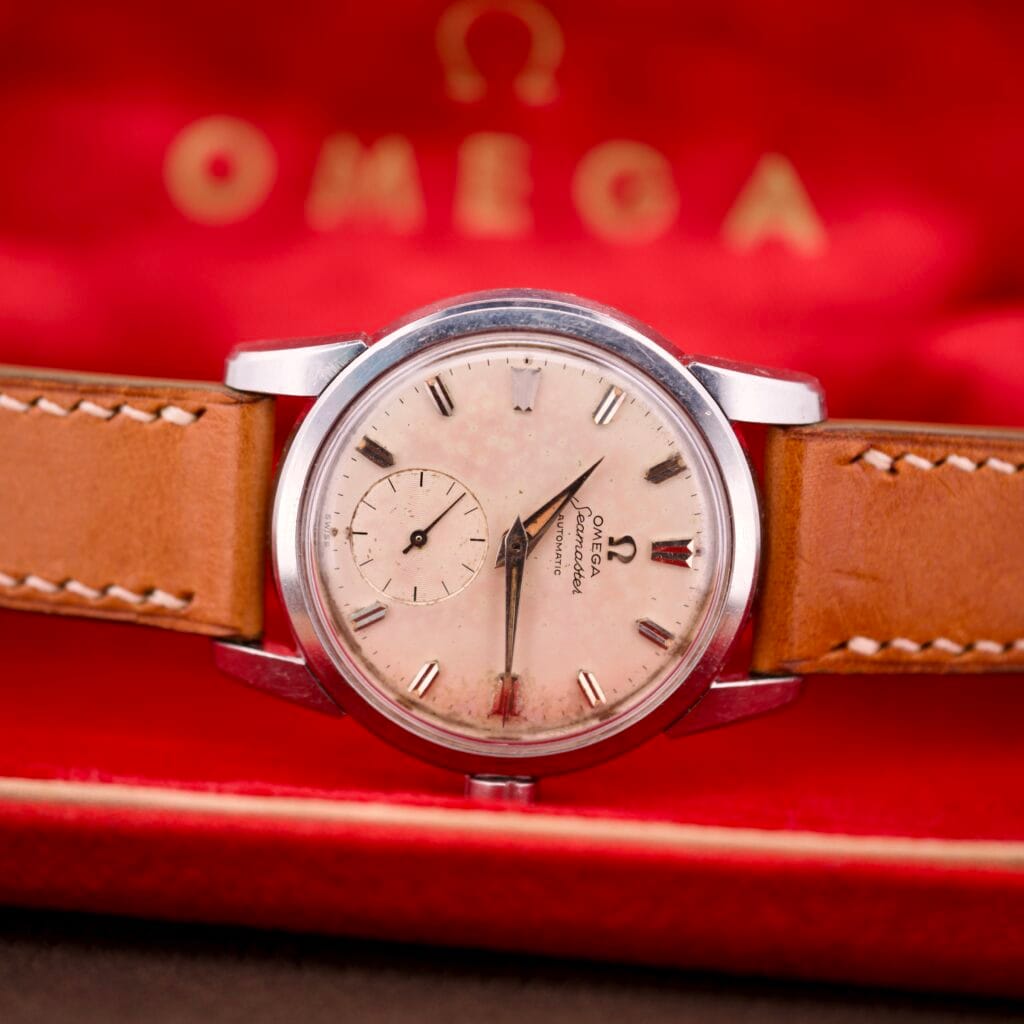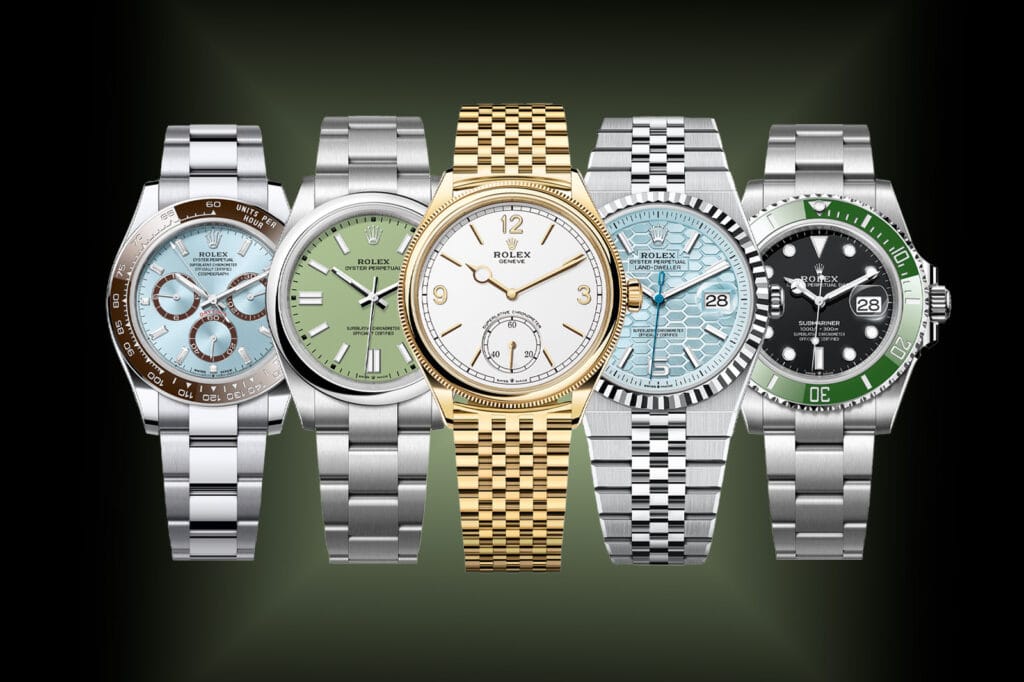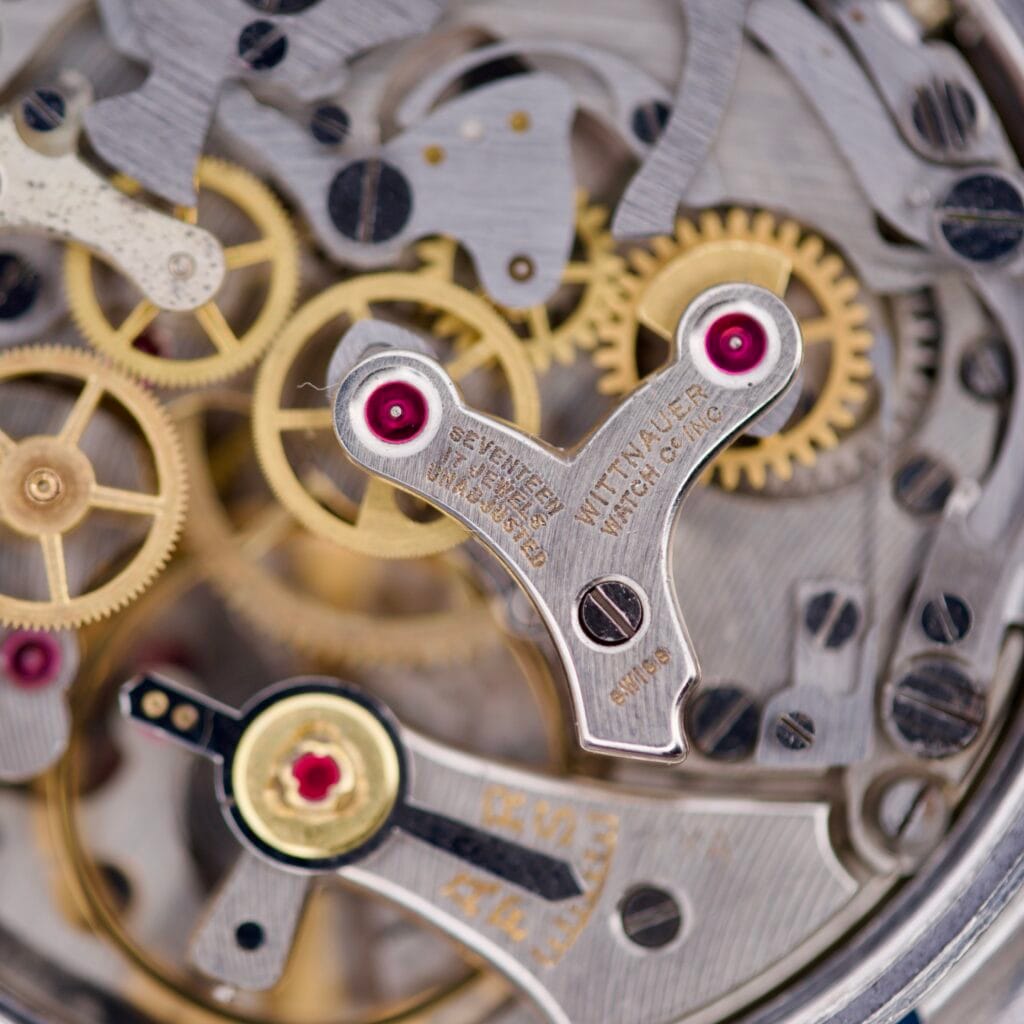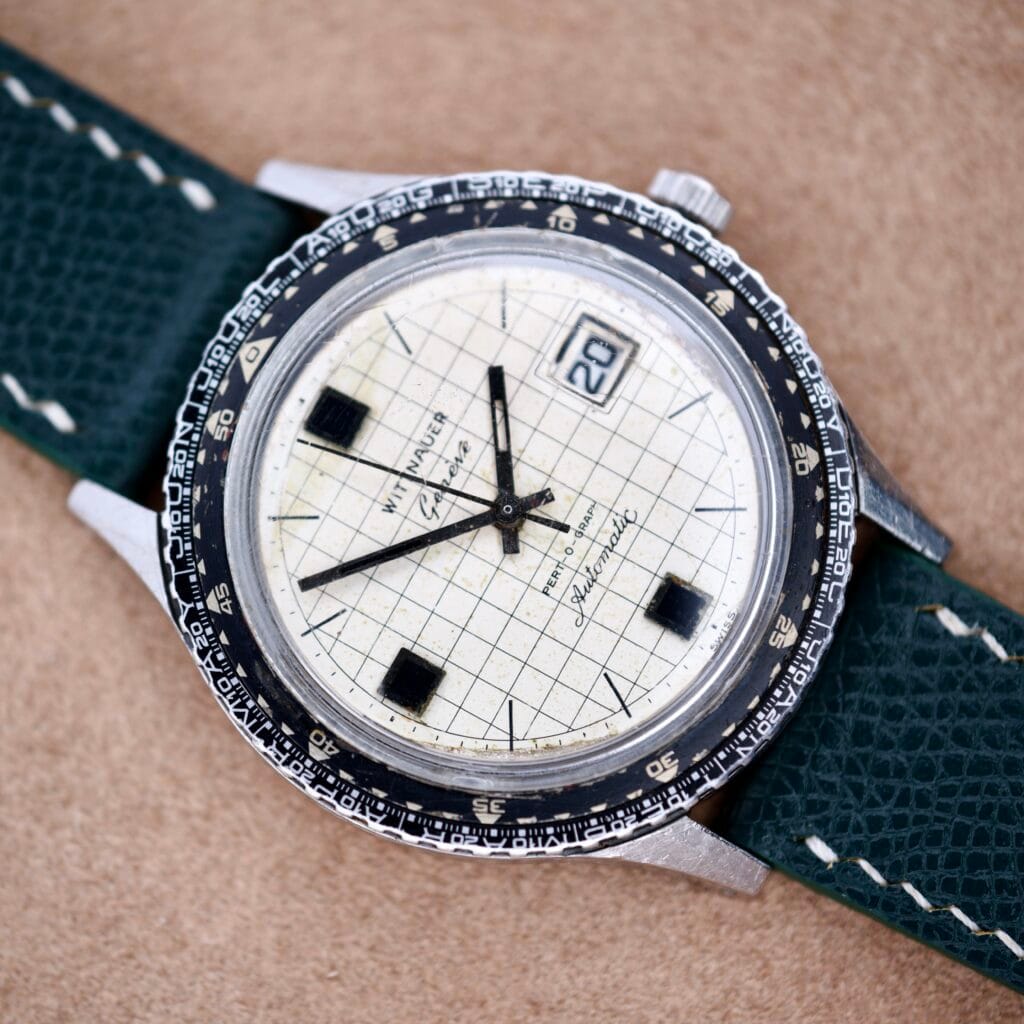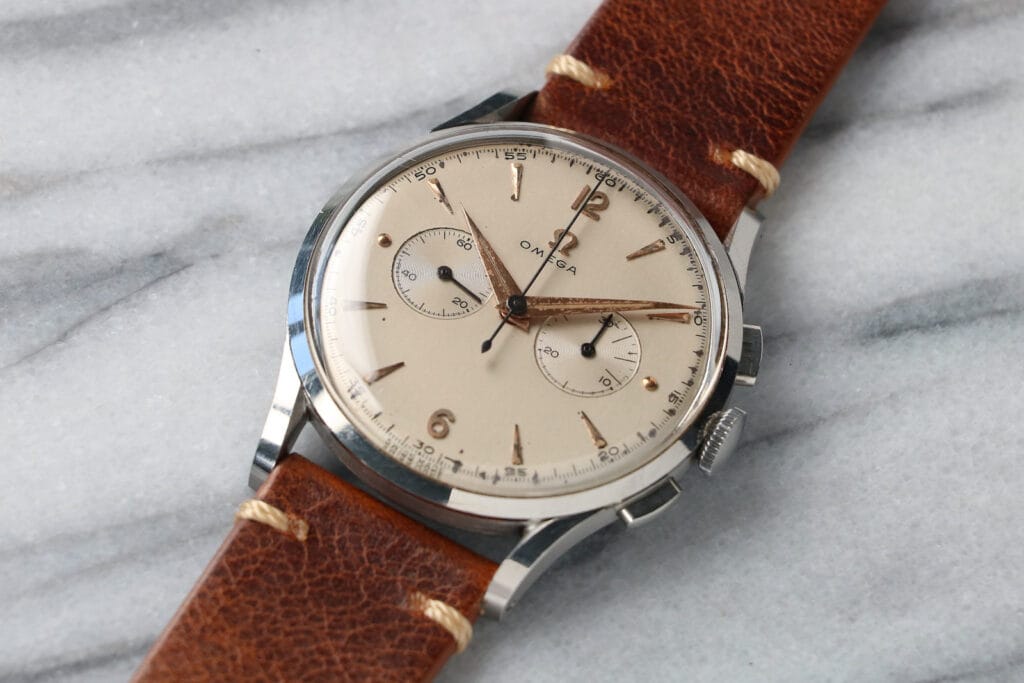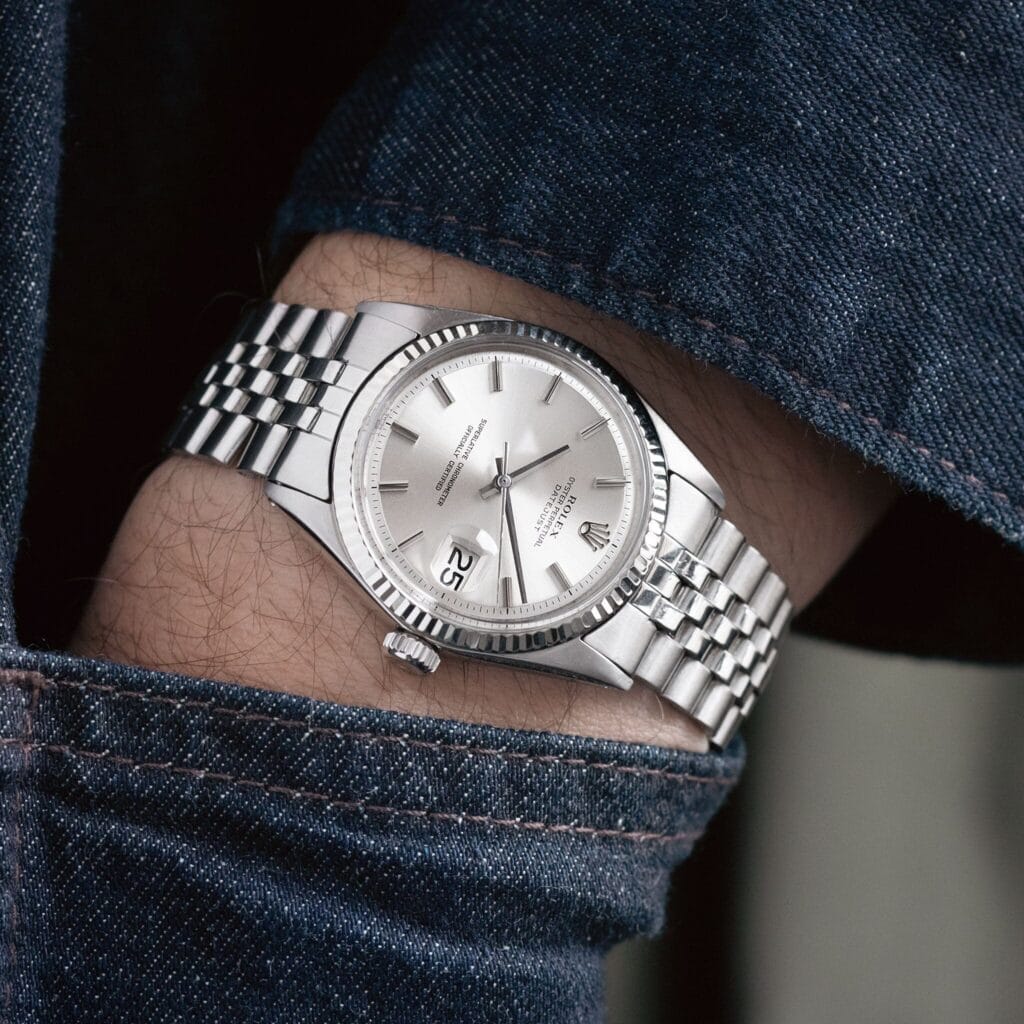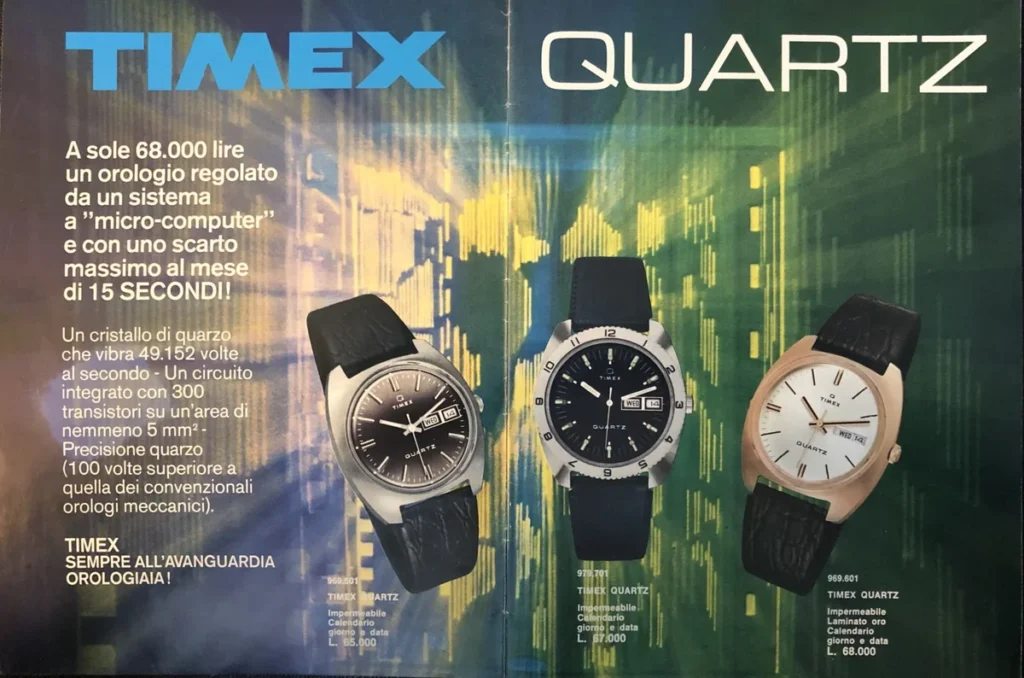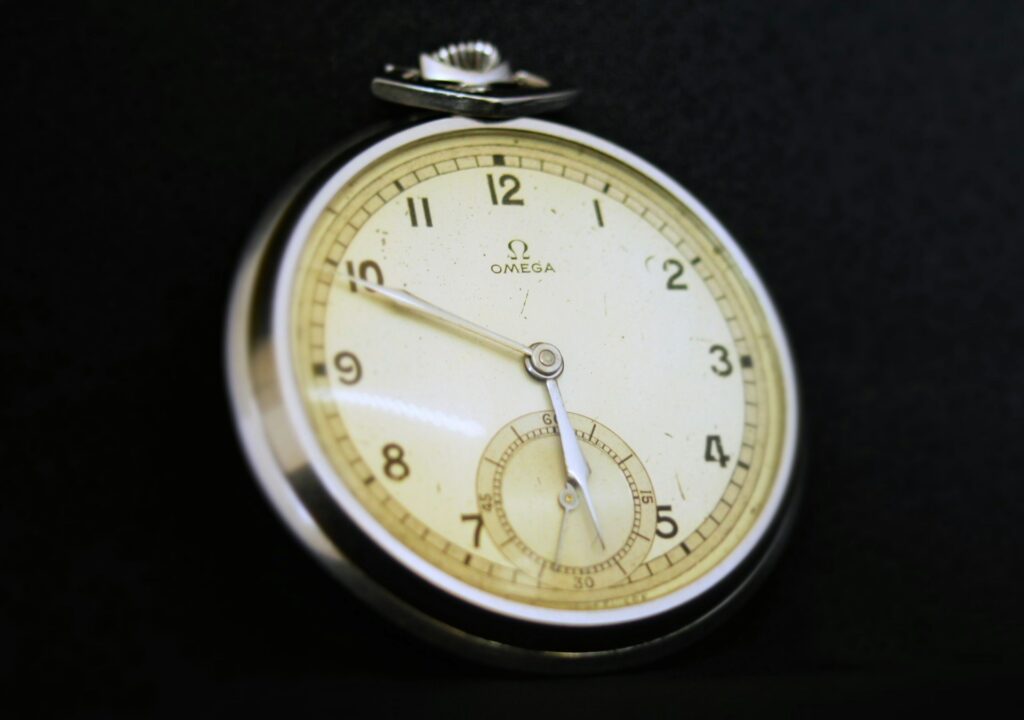Don't miss the next drop
Omega’s rich horological history, stretching back to 1848, has produced an astonishingly diverse and extensive catalogue of timepieces. From the depths of the ocean with the Seamaster to the surface of the moon with the Speedmaster, and the elegant soirées graced by the De Ville and Constellation, the sheer breadth of models and their subtle variations over decades necessitates a systematic approach to identification. For the discerning enthusiast, collector, or even the curious owner, understanding Omega’s reference number system, particularly the omega reference number, is paramount. These codes are the keys to unlocking a watch’s specific identity, its features, and its place within the brand’s storied timeline.
The Fundamental Distinction: Reference Numbers vs. Serial Numbers
At the heart of Omega’s identification methodology lie two distinct types of numbers: reference numbers and serial numbers. Grasping their different roles is the first crucial step in decoding the Omega reference number.
Reference Numbers, which Omega now often terms Product Identification Codes (PIC), are assigned to a specific model type or a particular configuration of a watch. Think of a reference number as the blueprint for a watch; it details characteristics such as the model family (e.g., Seamaster, Speedmaster), case material, movement type, dial design, and bracelet or strap type. Consequently, all watches manufactured to that exact same specification will share the identical reference number. The formalization from a general “reference number” to the branded “PIC Number” suggests a deliberate effort by Omega to standardize its product identification, a move likely reflecting the complexities of managing a vast and diverse product portfolio in a globalized market, integrating with modern inventory, marketing, and customer service strategies.
Serial Numbers, conversely, are unique identifiers assigned to each individual watch produced by Omega. Typically consisting of seven or eight digits, these numbers are generally etched onto the watch’s movement or, in more recent decades, on the exterior of the case. The primary utility of a serial number for collectors is to approximate the watch’s manufacturing period by cross-referencing it with established production date charts. Furthermore, serial numbers are indispensable for authentication, tracking a specific timepiece’s history, and for service records. It’s noteworthy that certain iconic lines, such as the Speedmaster, sometimes featured distinct serial number sequences for particular periods, underscoring their unique production trajectories.
The critical importance of distinguishing between these two numbering systems cannot be overstated. Confusing them can lead to significant errors in identifying a watch’s features or incorrectly estimating its age. In essence, the reference number tells you what the watch is designed to be, while the serial number tells you which specific example it is and offers a clue as to when it was made. This distinction is particularly vital for a brand like Omega, whose prolific output since its inception has resulted in countless individual watches (requiring unique serials) and an immense array of model variations (requiring specific references). The repeated emphasis on this difference in horological literature indicates its significance and potential for confusion among those less familiar with the brand’s intricacies.
For the enthusiast and collector, a working knowledge of these numbers is empowering. It allows for the verification of a watch’s authenticity, a thorough investigation of its specifications prior to a potential purchase, a deeper understanding of its historical context, and a finer appreciation of the subtle yet significant nuances that differentiate various Omega models.
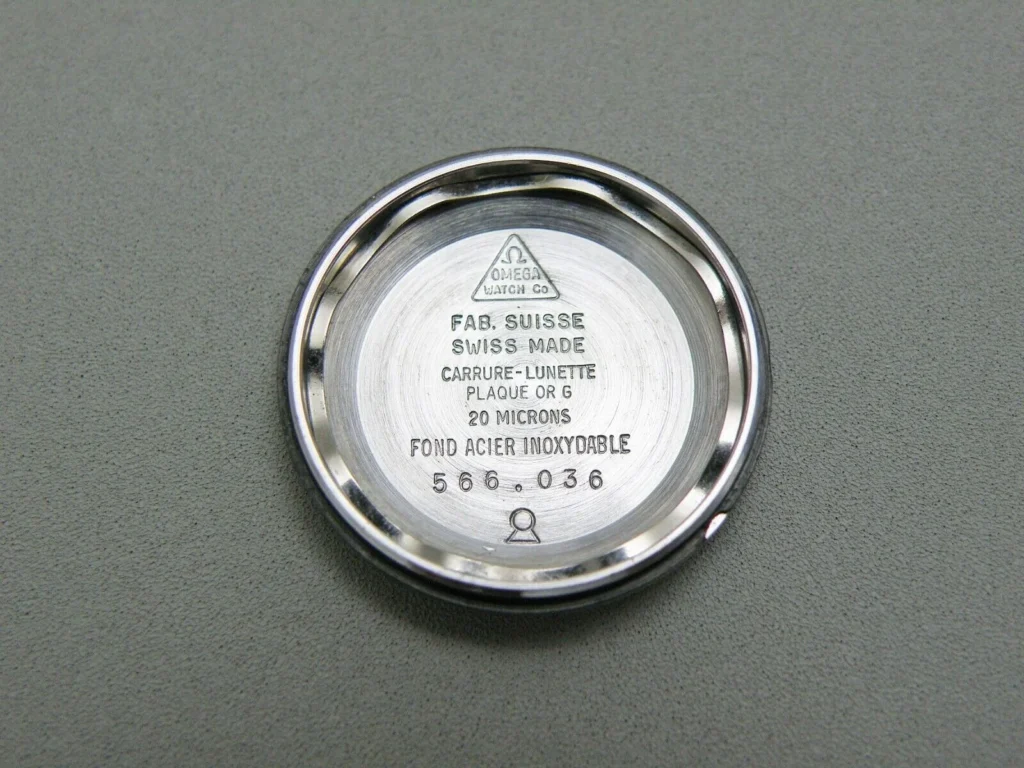
The Evolution of Omega Reference Numbers: A Historical Roadmap
Omega’s system for assigning reference numbers has not been static; rather, it has evolved over time, mirroring the company’s growth, the increasing complexity of its product lines, and advancements in manufacturing and data management. This progression from simpler alphanumeric codes to highly detailed numeric systems tells a story of adaptation and refinement.
Table 1: Overview of Omega Reference Number System Evolution
| System Name | Period of Use | Typical Format(s) | Key Characteristics |
|---|---|---|---|
| First System | Before 1962 | XY 1234 | Two letters (often material) followed by four digits (model identifier). |
| MAPICS (Management Program for Integrated Control Systems) | 1962 – ~1988 (overlapped to 2007) | XY.123.456 (from 1962) XY.123.4567 (from 1970) | Material code (XY) followed by 6 or 7 digits; first 3 digits coded watch characteristics. |
| PIC (Product Information Code) | ~1988 – 2007 (overlapped with MAPICS) | XXXX.YY.ZZ | Numeric code; XXXX for product line/material/variation, YY for dial/markers, ZZ for strap. |
| PIC14 System (Long Product Identification Code) | 2007 – Present | AAA.BB.CC.DD.EE.FFF | 14-digit numeric code detailing collection, material, size, movement, dial, and sequence. |
A. Early Days & The First System (Pre-1962): XY 1234
In its nascent stages of systematic cataloging, Omega employed a system typically comprising two letters followed by four digits, such as the famed CK 2915 for an early Speedmaster. These initial letters were often indicative of the case material :
- CK / MI: Stainless Steel
- OT / OJ: Solid Gold
- KO: Gold Cap (a layer of gold bonded over a base metal, usually steel)
- PK: Gold-Filled (a thicker, more durable layer of gold than simple plating)
The subsequent four digits served as model-specific identifiers. While these numbers allowed for differentiation between models, a comprehensive, publicly available key for decoding the precise meaning of each of the four digits is generally not known. Their interpretation beyond specific model association often remains opaque. It’s also important to note that while Omega began using reference numbers around the 1930s, their consistent application directly onto the watches (usually stamped inside the case back) did not become standard practice until the mid-1940s.
B. The MAPICS Era (1962 – ~1988, with overlap to 2007 for some uses): XY.123.456 & XY.123.4567
The introduction of the MAPICS (Management Program for Integrated Control Systems) around 1962 marked a significant step towards a more structured and informative reference number system. The format evolved during this period:
A comprehensive knowledge of the omega reference number system can enhance your collecting experience.
Every collector should strive to learn about their watch’s omega reference number.
- Initially, after a material code (which was sometimes incorporated or implied rather than explicitly prefixed in all documentation), a 6-digit number was used, typically presented as
123.456(e.g.,168.005for a Constellation). - From 1970, this was often extended to 7 digits, formatted as
123.4567(e.g.,145.0022for a later Speedmaster variant).
A key feature of the MAPICS system was that the first three digits (e.g., 168 in 168.005) provided coded information about the watch’s fundamental characteristics, such as gender classification (men’s/ladies’), movement type (manual/automatic, chronograph), and features like water resistance or chronometer certification. The digits following the period (.456 or .4567) were model-specific sequence or version identifiers. During the transition to and early period of MAPICS, some 3, 4, and 5-digit reference numbers continued to be used or were introduced for specific lines, and their full decodability remains limited.
The chronological progression of these reference number systems directly reflects Omega’s expansion, the increasing complexity of its watch families, and the technological evolution within watchmaking itself. The simple XY 1234 system was adequate when model ranges and material choices were more constrained. The advent of MAPICS, with its coded initial digits indicating specific features , was a necessary response to the need to manage a more diverse catalogue that included a growing number of automatic movements, chronometer-certified pieces, and watches with calendar functions.
C. The PIC System (Product Information Code) (~1988 – 2007, overlapping with MAPICS): XXXX.YY.ZZ
Running partly concurrently with the later iterations of the MAPICS system, the PIC system represented another phase in Omega’s refinement of product identification. This system, typically formatted as XXXX.YY.ZZ, encoded information as follows :
- XXXX: Encoded the product line, material type, and a product variation identifier.
- YY: Encoded dial color and the style of hour markers.
- ZZ: Encoded strap type or material.
The overlapping periods of different systems, such as MAPICS and PIC being active simultaneously from roughly 1988 to 2007 , are not necessarily indicative of disorganization. Instead, they point to the lengthy transitional phases often encountered in large-scale manufacturing when migrating extensive product lines to new identification standards. A company of Omega’s scale cannot instantaneously switch its entire cataloging system; new models might adopt an incoming system while older, still-in-production models retain the existing one for a period.
D. The Modern Standard: The 14-Digit PIC14 System (2007-Present): AAA.BB.CC.DD.EE.FFF
Since 2007, Omega has employed its most detailed and comprehensive reference number system, the 14-digit Long Product Identification Code (PIC14). This system, structured as AAA.BB.CC.DD.EE.FFF, allows for an exceptionally granular breakdown of nearly every conceivable aspect of a watch model, with Omega assigning a unique number to every distinct variation they sell. The shift from earlier alphanumeric components (like ‘CK’) to predominantly numeric codes in MAPICS and entirely numeric codes in PIC14 facilitated a vastly greater number of permutations and streamlined database management—an essential development as production volumes and model diversity scaled up significantly. This modern system is explored in detail in the following section.

Modern Omega Reference Numbers: The 14-Digit PIC14 System Unveiled (2007-Present)
Omega’s contemporary 14-digit PIC14 system, introduced around 2007, represents the pinnacle of the brand’s efforts to provide a unique and highly descriptive identifier for each watch variant. Structured as AAA.BB.CC.DD.EE.FFF, every segment of this code carries specific information.
A. AAA: Collection Code The initial three digits (AAA) designate the primary Omega collection or watch family.
Table 2: PIC14 – AAA Collection Codes (Selected Examples)
| Code (AAA) | Collection Name |
|---|---|
123 | Constellation |
130 | Constellation Globemaster |
131 | Constellation Manhattan |
210/212 | Seamaster Diver 300M |
215/232 | Seamaster Planet Ocean (e.g., 600M) |
220 | Seamaster Aqua Terra |
233 | Seamaster 300 (Heritage) |
304 | Speedmaster Moonwatch Moonphase |
310/311 | Speedmaster Moonwatch Professional (Co-Axial) |
327 | Speedmaster Mark II |
329 | Speedmaster Racing |
331 | Speedmaster ’57 |
424 | De Ville Prestige |
425 | De Ville Ladymatic |
428/432 | De Ville Trésor |
522 | Specialities (e.g., Olympic Games Collection) |
The ‘5xx’ designation for “Special Releases” is particularly noteworthy. This indicates a strategic approach to managing limited editions, Olympic partnership pieces, and other non-standard catalogue items, allowing them to be systematically tracked while remaining distinct from the regular production lines. Such special editions are vital for brand prestige and maintaining collector interest.
B. BB: Case Material and Bracelet/Strap Type The subsequent two digits (BB) provide a detailed breakdown of the material used for the watch head (case) and the type and material of the accompanying bracelet or strap. This is a complex matrix, with numerous combinations.
Table 3: PIC14 – BB Material & Strap Codes (Selected Examples)
| Code (BB) | Case Material Head | Bracelet/Strap Type & Material | Notes |
|---|---|---|---|
10 | Stainless steel | Assorted metal (likely steel bracelet) | |
12 | Stainless steel | Non-metal strap | No CITES permit required (e.g., rubber, fabric) |
13 | Stainless steel | Non-metal strap | CITES permit required (e.g., alligator) |
20 | Stainless steel + Gold | Assorted metal (likely steel/gold bracelet) | |
32 | Stainless steel + Other material (e.g., ceramic) | Non-metal strap | No CITES |
50 | Gold | Assorted metal (likely gold bracelet) | |
53 | Gold | Non-metal strap | CITES |
65 | Gold + Other material, Paved | Assorted metal | Case/bezel may have gemstones |
90 | Other material (e.g., ceramic, titanium) | Assorted metal (e.g., ceramic/Ti bracelet) | |
93 | Other material (e.g., ceramic, titanium) | Non-metal strap | CITES |
The extreme granularity of the ‘BB’ codes, differentiating types of steel, various gold alloys (including Omega’s proprietary Sedna™, Canopus Gold™, and Moonshine™ Gold ), advanced ceramics, titanium, and even the CITES (Convention on International Trade in Endangered Species of Wild Fauna and Flora) compliance status for exotic leather straps, reflects the explosion of technological and material innovations in modern watchmaking. Omega’s commitment to offering a diverse array of choices is clearly encoded here.
C. CC: Case Diameter These two digits (CC) represent the case diameter of the watch in millimeters, rounded to two digits according to standard mathematical rules. For instance, 42 would denote a 42mm case diameter , while 34 would indicate 34mm.
D. DD: Movement Type and Complications The eighth and ninth digits (DD) provide crucial information about the movement powering the watch and any additional complications it may feature.
Table 4: PIC14 – DD Movement & Complication Codes
| First “D” (Movement) | Meaning | Second “D” (Complications) | Meaning |
|---|---|---|---|
0 | Mechanical (manual or automatic) | 0 | 0 complications |
1 | Mechanical, Chronometer certified | 1 | 1 complication |
2 | Mechanical, with Co-Axial escapement | ... | Up to 9 complications |
3 | Mechanical, Chronograph | ||
4 | Mechanical, Chronograph, Chronometer | ||
5 | Mechanical, Chronograph, Co-Axial | ||
6 | Quartz | ||
7 | Quartz, Chronograph |
This ability to specify Co-Axial escapements, chronometer status, and the number of complications is vital for a brand that heavily promotes these advanced technical features.
E. EE: Dial Color and Material The next two digits (EE) describe the dial’s color and can also indicate if it incorporates special materials like Mother of Pearl (MOP) or is set with gemstones.
Table 5: PIC14 – EE Dial Codes (Selected Examples)
| Code (EE) | Dial Color / Material |
|---|---|
01 | Black |
02 | Silver |
03 | Blue |
04 | White |
05 | White Mother of Pearl (MOP) |
06 | Grey |
08 | Champagne |
13 | Brown |
51 | Black, with precious stones |
53 | Blue, with precious stones |
63 | Brown, with precious stones |
99 | Others (e.g., fully paved, meteorite, special materials) |
F. FFF: Sequential Production Number The final three digits (FFF) serve as a sequence number for the specific model variant if all preceding eleven codes are identical. This helps differentiate between very minor, un-coded variations, identifies watches within a specific production batch, or can be an internal descriptor. This implies that even after eleven digits of detailed coding, Omega encounters situations requiring further distinction, perhaps for subtle regional specifics or simply for meticulous batch tracking.
G. Examples of Decoding Modern PIC14 Numbers:
- Omega Seamaster Diver 300M –
212.32.41.20.04.001:212: Seamaster Diver collection.32: Stainless steel case with “other material” (likely a ceramic bezel insert) and a non-metal strap (e.g., rubber, not requiring CITES).41: 41mm case diameter.20: Mechanical movement with Co-Axial escapement, 0 additional complications.04: White dial.001: First sequence number for this exact configuration.
- Omega Speedmaster Grey Side of the Moon –
311.93.44.51.99.001:311: Speedmaster family.93: “Other material” case (specifically, ceramic) and a non-metal strap (likely leather, CITES applicable).44: 44mm case diameter.51: Mechanical Co-Axial Chronograph with 1 additional complication.99: “Special material” dial (this could refer to the ceramic material of the dial itself or a unique finish).001: First sequence number for this model.

Vintage Omega Reference Numbers: Pre-PIC14 Reference Systems
For watches produced before the advent of the PIC14 system in 2007, Omega utilized several earlier reference number formats. While not always as comprehensively decodable as the modern system, they still offer valuable insights into a vintage timepiece’s characteristics.
A. The MAPICS System in Detail (XY.123.456 / .4567) (Primarily 1962 – late 1980s)
The MAPICS system, introduced in 1962, brought more structure to Omega’s reference numbers. The core of many MAPICS references is a six or seven-digit number, often presented with a period after the first three digits (e.g., 145.022 or 168.0005). The initial letters denoting material (XY) became less consistently prefixed directly with the numeric code in all documentation but were still relevant.
Interpreting the First Three Digits (e.g., 145 in 145.022): These digits encoded key watch characteristics. One widely referenced decoding table for this segment is provided by resources such as old-omegas.com.
Table 6: Decoding MAPICS Reference Numbers (First Three Digits)
| Digit Position | Value | Meaning (Examples) |
|---|---|---|
| 1st Digit | 1 | Gent’s Watch |
5 | Lady’s Watch | |
| 2nd Digit | 1 | Manual winding, no seconds |
3 | Manual winding, center seconds | |
4 | Manual winding, chronograph | |
6 | Self-winding (automatic), center seconds | |
7 | Self-winding (automatic), chronograph | |
| 3rd Digit | 1 | Non-water-resistant |
2 | Non-water-resistant, Calendar | |
3 | Non-water-resistant, Chronometer | |
5 | Water-resistant | |
6 | Water-resistant, Calendar | |
7 | Water-resistant, Chronometer | |
8 | Water-resistant, Chronometer, Calendar |
The partial decodability of these first three MAPICS digits represented a significant advancement, allowing for some level of feature identification directly from the number. However, the reliance on external, community-compiled tables for even this partial decoding highlights that comprehensive, official vintage decoding guides from Omega are not always readily available to the public. This makes the accumulated knowledge within the collector community invaluable.
Subsequent Digits (.XXX or .XXXX): The digits following the period (e.g., .022 in 145.022) were model or version-specific identifiers within the characteristic group defined by the first three digits. When searching Omega’s Vintage Database (OVD), it’s sometimes necessary to adapt the format; for instance, a 6-digit reference like 145.022 might need to be entered as 145.0022.
Alphanumeric 7-Digit References (from 1970-1988): A variation within the MAPICS era was an alphanumeric code, often structured as BB.145.XXXX. Here, the initial letters (BB) denoted materials, the three digits (145) corresponded to the watch characteristics as per the table above, and the final four digits (XXXX) were style or specific model identifiers.
B. Early Material Codes (Pre-1960s/Early MAPICS): Before and during the early phases of the MAPICS system, two-letter prefixes were commonly used with the numeric part of the reference number to indicate the case material. These codes, however, were not always consistently applied or even marked on the case itself, suggesting they might have served more as internal or catalogue identifiers in those earlier periods.
Table 7: Common Vintage Omega Material Prefixes (Pre-1960s/Early MAPICS)
| Prefix | Material |
|---|---|
CK | Stainless Steel |
MI | Stainless Steel (alternative) |
OT | Solid Gold (often 18k) |
OJ | Solid Gold (often 18k, alternative) |
KO | Gold Cap |
PK | Gold-Filled |
The inconsistency of these early material codes (e.g., both CK and MI being used for steel ) and their infrequent appearance directly on the watch case implies that the reference number was perhaps more of an internal organizational tool rather than the prominent on-product identifier it has become in modern times.
C. The Enigma of 3, 4, and 5-Digit References (Primarily pre-1962, with some 5-digit overlap into early 1960s): Omega’s earliest reference systems often involved a two-letter material prefix followed by a 3, 4, or 5-digit number (e.g., the XY 1234 format). The numeric part (such as 2852 for an early “Pie-Pan” Constellation ) is largely considered a direct model identifier, without a known systematic breakdown for the meaning of each individual digit within that number. Identification of these pieces relies more heavily on cross-referencing with vintage catalogues, meticulous visual comparison of features (dial, hands, case shape), and using the movement’s serial number for dating. The 5-digit system (e.g., 14393 for a Constellation ) was relatively short-lived, appearing in the late 1950s and mostly phased out by the early 1960s, using similar material prefixes to the 4-digit system.
D. Common Vintage Examples and Their Breakdown:
- Omega Speedmaster
145.022(often with a suffix like-69indicating a year variant):145: Decodes as Gent’s watch (1), Manual winding chronograph (4), Water-resistant (5)..022: The specific model identifier for this iteration of the Speedmaster.- Suffixes like
-69often denote the year of case design or production, or a specific iteration within the145.022family. This suggests a sub-system for tracking design iterations or production year specifics, a precursor to the more detailedFFFsequence in the modern PIC14 system.
- Omega Constellation
168.005(Pie-Pan Era):168: Applying the MAPICS decoding logic , this translates to Gent’s watch (1), Self-winding centre second (6). The ‘8’ for the third digit signifies Water-resistant, Chronometer, Calendar, which aligns with the features of the Caliber 561/564 movements typically found in these models (chronometer-rated with date)..005: The specific model identifier for this popular Constellation variant. Omega’s own vintage database confirmsST 168.0005as a 1962 Constellation Calendar model.
- Omega Constellation
OT 2852(Pie-Pan Era):OT: Indicates a Solid Gold case.2852: A 4-digit reference. Here, the2852itself is the model number. This reference is associated with early Constellations from 1952-1962, typically featuring “Pie-Pan” dials, arrow/diamond markers, and no date function.
Locating Your Omega’s Numbers: A Practical Guide
Identifying your Omega’s reference and serial numbers is the gateway to uncovering its history and specifications. These numbers can be found in several locations, depending on the watch’s age and model.
A. On the Watch Itself:
- Reference Numbers:
- Vintage Models: The reference number is most commonly stamped on the inside of the case back. It is not unusual to sometimes find two reference numbers on a single case back if that particular case design was used for slightly different models or configurations.
- Modern Models: While the warranty card is the primary source for the full PIC14 reference number, elements of it or related model identifiers might be found on the case back exterior or lugs. However, serial numbers are more consistently found on the exterior of contemporary pieces.
- Serial Numbers:
- Vintage Models (generally pre-1990s): The serial number is predominantly found engraved on the watch’s movement, typically on one of the bridges. In some instances, it might also be located on the interior of the case back. For Omega pocket watches from the early 20th century, the serial number could even be on the dial side of the baseplate, requiring partial disassembly to view.
- Modern Models (from the early 1990s onwards): Omega began placing the movement’s serial number on the exterior of the watch. Common locations include the back of one of the lugs (often the lug at the 7 o’clock position ) or on the outside of the caseback. These numbers are often applied using precision laser etching and may require a loupe or magnifying glass to read clearly.
- It’s worth noting that some Omega watches, particularly those with certain non-COSC certified movements or some ETA-based calibers, may not have a serial number directly on the movement. In such cases, a serial number will typically be found elsewhere on the watch, such as the case back or lugs. Omega’s placement of serial numbers has not always been perfectly consistent across all models and eras, which can occasionally add a layer of complexity for collectors.
The shift in serial number placement from internal (movement/inner caseback) to external (lugs/outer caseback) around the early 1990s likely reflects the burgeoning secondary market and heightened collector interest. In this environment, easier, non-invasive access to a key authenticator like the serial number became increasingly desirable for both buyers and sellers. In earlier decades, when watches were perhaps less frequently traded as collectibles, the owner and official service centers were the primary parties needing such access. The reported inconsistencies in serial number placement for some models or periods can sometimes be a source of confusion for less experienced collectors, underscoring the need for broader knowledge beyond simple rules; an unfamiliar placement isn’t automatically a red flag but warrants more careful investigation.
B. Accompanying Paperwork (Crucial for Both Reference and Serial Numbers):
The original documentation accompanying an Omega watch is an invaluable resource for both reference and serial numbers:
- Warranty Card: This is often the most comprehensive source, typically including the full reference number (PIC for modern watches), the unique serial number, the date of purchase, and the full details of the authorized retailer.
- Chronometer Certificate: For watches certified as chronometers, this certificate will bear the movement’s serial number.
- Certificates of Authenticity / Official Service Records: Any official documentation from Omega or authorized service centers concerning the watch will also list these vital numbers, providing a paper trail for its history.
C. Tips for Accessing Numbers:
- For vintage watches where the numbers are located internally (inside the case back or on the movement), it is strongly advisable to have a qualified and experienced watchmaker open the case. Attempting to do so without the proper tools and expertise can easily lead to damage to the case, movement, or seals.
- For numbers engraved on the exterior of the watch, good lighting and a jeweler’s loupe or a quality magnifying glass are often essential for clear visibility, especially for finely etched modern serial numbers.
Beyond Reference Numbers: The Role of Omega Serial Numbers
While reference numbers define the “what” of an Omega watch, serial numbers address the “which” and “when.” Each Omega timepiece is endowed with a unique 7 or 8-digit serial number, serving as its individual fingerprint.
A. Primary Purpose: Unique Identification and Dating The most common application of serial numbers by enthusiasts and collectors is to estimate the watch’s approximate year of production. This is achieved by comparing the watch’s serial number to established Omega production date charts, which correlate serial number ranges with manufacturing periods.
B. Omega Serial Number Ranges and Production Year Estimation Omega serial numbers were typically issued in a somewhat sequential manner, although some discrepancies and overlaps between ranges and years can exist. It is crucial to consult reliable charts, and often, separate charts are available for general Omega models and for the Speedmaster line, owing to the latter’s distinct and extensively documented production history. The existence of these separate Speedmaster serial number dating tables highlights the model’s iconic status, its consistently high production volume over many decades, and the intense scrutiny by collectors of its specific lineage and numerous variations. The Speedmaster is, in many ways, treated almost as a sub-brand within Omega in terms of historical tracking.
Table 8: Omega Serial Numbers (Excluding Speedmaster) to Year Chart (Abbreviated)
| Serial Number Range (Approx.) | Earliest Production Year |
|---|---|
| 1,000,000 – 1,999,999 | 1894 |
| 9,000,000 – 9,999,999 | 1939 |
| 12,000,000 – 12,999,999 | 1950 |
| 17,000,000 – 17,999,999 | 1959 |
| 24,000,000 – 24,999,999 | 1966 |
| 32,000,000 – 32,999,999 | 1970 |
| 44,000,000 – 44,999,999 | 1980 |
| 49,000,000 – 50,999,999 | 1986 |
| 60,000,000 – 60,999,999 | 1999 |
| 84,000,000+ | 2008+ |
Table 9: Omega Speedmaster Serial Numbers to Year Chart (Abbreviated)
| Serial Number Range (Approx.) | Estimated Production Year(s) |
|---|---|
| 14,000,000 – 14,999,999 | 1957 |
| 17,000,000 – 17,999,999 | 1960 |
| 22,000,000 – 22,999,999 | 1964/1965 |
| 26,000,000 – 26,999,999 | 1968 |
| 31,000,000 – 31,999,999 | 1972 |
| 40,000,000 – 41,999,999 | 1980 |
| 48,000,000 – 48,999,999 | 1990 – 1999 |
| 77,000,000+ | 1999+ (New System) |
It is important to remember that these charts provide approximate production years. Watches were not invariably cased or sold strictly in the order of their movement serial numbers. Furthermore, for Omega watches using ETA-based movements, particularly after 1980, the accuracy of general serial number tables might be less precise. The caveat that serial numbers offer an approximate date is significant; movements might have been produced in large batches and stored before being cased, and a watch could remain with a retailer for some time before sale. Thus, a serial number typically points to the era of movement manufacture, which may not perfectly align with the year the completed watch reached the market. Around 2019, Omega reportedly transitioned from sequential 8-digit serial numbers to randomized 8-digit numbers. This move, mirroring a practice adopted by other luxury brands like Rolex, likely serves multiple strategic aims: it makes estimating annual production volumes more difficult (thereby helping to maintain an aura of exclusivity or manage market perception) and significantly complicates the task for counterfeiters, who can no longer rely on predicting or generating plausible sequential numbers.
C. Importance in Authentication and Service History The serial number plays a critical role in the authentication process. Omega boutiques or authorized service centers can sometimes assist in verifying if a specific watch model corresponds to a given serial number, offering an important (though not absolute) indication of legitimacy. The absence of a serial number, or one that is clearly incorrect or poorly applied, is a strong red flag for a counterfeit piece. Furthermore, it’s known that replica manufacturers often reuse the same limited set of fake serial numbers across many copies; these numbers are frequently flagged and shared within the watch enthusiast community. Beyond authentication, official service records for an Omega watch are intrinsically linked to its unique serial number, allowing for a traceable history of maintenance and repairs.
Special Cases, Exceptions, and Collector Insights
The world of Omega numbering, particularly for vintage pieces, is not without its idiosyncrasies. Understanding these special cases and exceptions is crucial for accurate identification and valuation. The various deviations from standard patterns demonstrate that identifying and authenticating vintage Omegas often requires more than simple database lookups; it demands a nuanced appreciation of Omega’s historical business practices, market-specific adaptations, and an awareness of the limitations of currently available records. This complexity elevates the role of expert knowledge and dedicated community resources.
A. US Market Variations and “G” Prefix References Omega produced certain watch models exclusively or with specific modifications for the United States market. These adaptations sometimes included movements with lower jewel counts (e.g., the Caliber 470 being a 17-jewel version of the 19-jewel Caliber 471) to navigate US import tariffs, which were often based on jewel count. These US-market models frequently featured reference numbers with a “G” prefix (e.g., G6212). A significant challenge for collectors is that these “G” prefix references are often not listed in Omega’s publicly accessible Vintage Database (OVD), making their identification and verification more reliant on specialized knowledge and comparative analysis.
B. Locally Cased Watches (UK and US Markets) In certain periods, to manage import duties more effectively or to cater to specific local market tastes and regulations, Omega supplied movements and other components to be cased by local manufacturers in key markets like the United Kingdom and the United States. This practice was a significant logistical and economic strategy.
- United Kingdom: Solid gold cases, particularly those of 9-carat purity (a common standard in the UK), were often manufactured by companies such as Dennison of Birmingham (whose maker’s mark was “A.L.D.”). These Dennison-made Omega cases typically bear a distinct set of hallmarks: the Omega stamp, the reference or a case serial number, a purity mark (e.g., “9” and “.375” for 9ct gold), an assay office mark (e.g., Birmingham, London), and a date letter corresponding to the year the case itself was assayed and hallmarked. These locally cased watches, with their unique markings, form distinct sub-categories of vintage Omegas that are of particular interest to specialized collectors.
- United States: Gold-plated and gold-filled cases for Omega watches destined for the US market were often produced by American case makers like Wadsworth, Star Watch Case Company, and others. Stainless steel cases for US-market Omegas were generally Swiss-made.
C. Inconsistencies and the Omega Vintage Database (OVD) Limitations The Omega Vintage Database (OVD), accessible via the brand’s website, is an invaluable starting point for researching older models. However, it is widely acknowledged by experts and long-time collectors that the OVD is not exhaustive. It is known to have gaps, missing entire models or specific variations of listed watches. Therefore, a watch not appearing in the OVD should not automatically be dismissed as inauthentic; it may simply be one of the many unlisted examples. Further inconsistencies in vintage references include:
- Material codes in early systems could vary (e.g., both
CKandMIused for stainless steel). - A single reference number could occasionally be used for models that appeared in different Omega collections (e.g., a watch being part of both the Seamaster and Geneve lines) or for models with slight variations in dial or hands that are not always explicitly detailed in the OVD.
- When searching the OVD for 6-digit MAPICS numbers (e.g.,
145.022), it may be necessary to input the number with an extra zero after the period (e.g., as145.0022) for the database to return a result. The OVD’s incompleteness, while sometimes a source of frustration, has inadvertently fostered a stronger and more collaborative collector community. When official sources have limitations, enthusiasts are driven to share their knowledge, compile independent databases, and rely on forums and expert opinions to fill the informational voids, creating a dynamic research environment.
D. The Significance of Matching Numbers for Collectors For collectors of vintage Omega watches, the concept of an “all correct” or “period-appropriate” piece is paramount. This means that the movement caliber, the movement’s serial number range, the case reference number, and the style of the dial, hands, and crown should all be consistent with each other and appropriate for the specific model and its estimated production period. Significant mismatches – such as a movement whose serial number indicates it was made years after the case reference was discontinued, or a dial style anachronistic to the watch’s era – can substantially devalue a watch and often point to it being a “frankenwatch” (a watch assembled from disparate, non-original parts). An important exception here involves US market movements, which, as mentioned, might have different caliber numbers due to lower jewel counts but are perfectly correct for US-cased models of that era.
E. Other Noteworthy Points for Vintage Identification:
- Two reference numbers on one case back: While uncommon, this is not unheard of. It typically indicates that a particular case design was versatile enough to be used for two slightly different models, perhaps varying in dial, handset, or even movement.
- Collection name on dial versus reference number: It’s quite possible for a vintage Omega to have a reference number that clearly assigns it to a specific collection (e.g., Seamaster) yet not feature that collection’s name on the dial itself. This was particularly common in the 1950s through the 1970s. For Seamaster models, the iconic hippocampus logo on the case back began to appear consistently from very late 1957 onwards; its absence on a Seamaster dating before this period is generally considered normal.
Conclusion
Omega’s intricate systems of reference and serial numbers, though evolving and presenting complexities over a manufacturing history that spans more than 175 years, are undeniably powerful tools. They offer an invaluable window into a watch’s precise identity, its intended features, its material composition, and its approximate era of production. The entire lineage of these numbering systems stands as a testament to the brand’s enduring presence in the horological world and its continuous adaptation to manufacturing challenges, shifting market demands, and significant technological progress.
Armed with the knowledge outlined in this guide, enthusiasts, collectors, and owners alike can navigate the diverse universe of Omega watches with significantly greater confidence and insight. Whether identifying a cherished family heirloom, meticulously researching a potential vintage acquisition, or simply deepening one’s appreciation for the remarkable depth of Omega’s horological legacy, understanding these codes is transformative.
While the systems have changed over time and exceptions certainly exist—particularly within the realm of vintage pieces—grasping the underlying logic behind Omega’s coding methodologies helps to demystify what can initially seem like a daunting and impenetrable array of digits. For vintage Omega watches especially, the research process itself can be a rewarding part of the ownership experience. Ultimately, mastering Omega’s codes is not merely about the rote memorization of numbers and tables; it is about understanding the why behind them—the historical context, the manufacturing rationale, and the narrative of the brand’s evolution. This deeper comprehension transforms these alphanumeric strings from mere identifiers into keys that unlock a richer, more nuanced appreciation of Omega’s immense contributions to the art and science of watchmaking. The journey of discovery is ongoing, and continuous learning, coupled with engagement with the broader collector community, remains essential for navigating the more arcane aspects of Omega’s older and sometimes enigmatic reference systems.
Visit Omega’s Website
Related posts
The Evolution of the Rolex Datejust: 1945-1990
The Rolex Datejust revolutionized wristwatches in 1945 as the world's first self-winding waterproof chronometer with an automatically c...
The Ultimate Guide to Vintage Omega Seamasters
Vintage Omega Seamasters represent one of the most compelling propositions in watch collecting today - offering military provenanc...
The Expert’s Guide to Rolex Serial Numbers and Reference Numbers
Understanding Rolex serial numbers is essential for any Rolex enthusiast, collector, or potential buyer. These unique identif...
The Collector’s Guide to Vintage Wittnauer Chronographs
Vintage Wittnauer chronographs represent one of the most compelling value propositions in the world of mid-century timepieces. While br...
Wittnauer Pert-o-Graph Ref. 7005: An Analog Computer for the Project Manager’s Wrist
Wittnauer Pert-o-graph, tool watch or something else? In the history of horology, the "tool watch" has traditionally been defined by it...
The Expert’s Guide to Buying Vintage Watches on eBay In 2025
eBay, to the aspiring watch collector, is a landscape of profound contradiction. It is a digital bazaar of immense scale, a place where...
Complete Guide to the Rolex Datejust 1601
In the grand pantheon of horology, few timepieces command the same blend of understated elegance, historical significance, and everyday...
How the Quartz Crisis Nearly Ended Swiss Watchmaking
Before the quartz crisis (1970s), the Swiss watchmaking industry stood as an unshakeable colossus, a global symbol of precision, intric...
An Expert’s Guide to Omega Reference Numbers
Omega's rich horological history, stretching back to 1848, has produced an astonishingly diverse and extensive catalogue of timepieces....
Patina vs. Damage on a Watch Dial
Among vintage watch enthusiasts and collectors, one of the most debated topics revolves around patina and damage. What sets the two apa...
How Old Is My Bulova Watch? Production Date Guide
Bulova, one of the first companies to mass-produce wristwatches in the early 20th century, has made it easier than most to identify the...
Transform Your Watch in Minutes: A Guide to Watch Straps
Your watch says as much about you as your outfit does. With a simple swap of a strap, you can transform a single watch into something f...
Recent Posts
Recent Comments
No comments to show.

